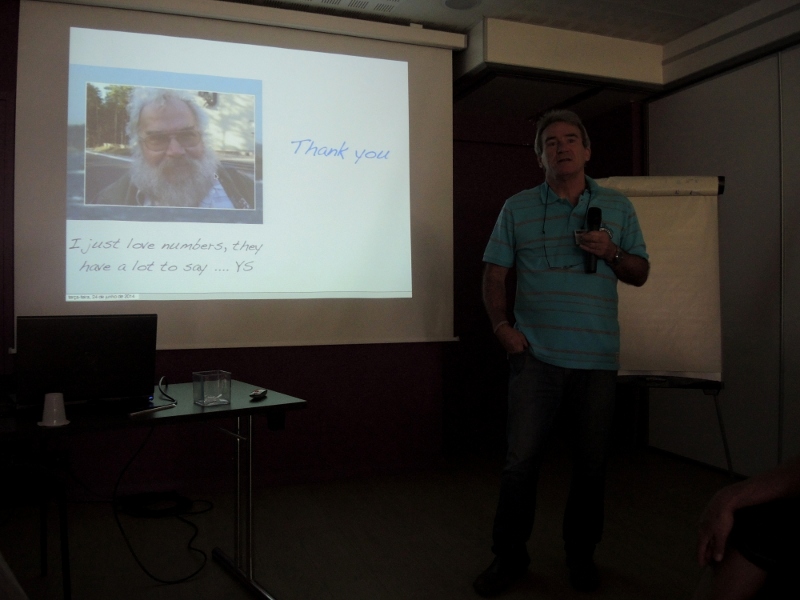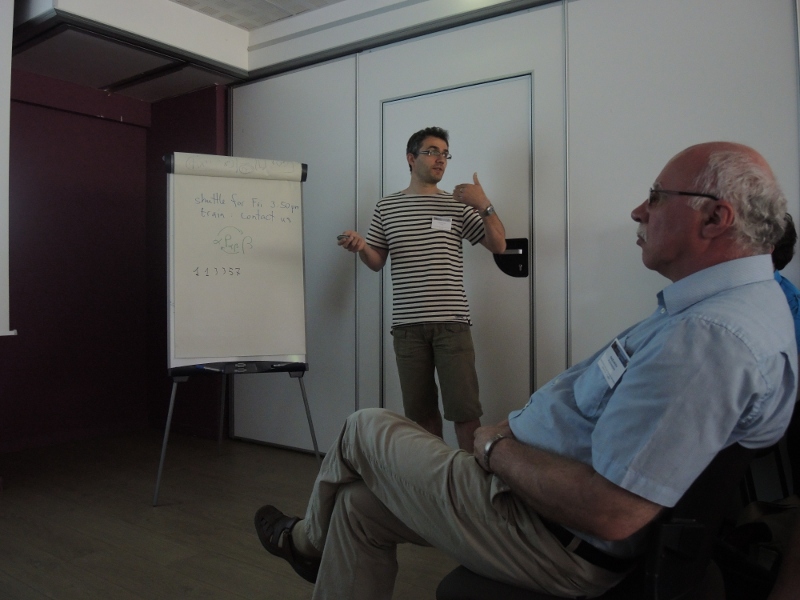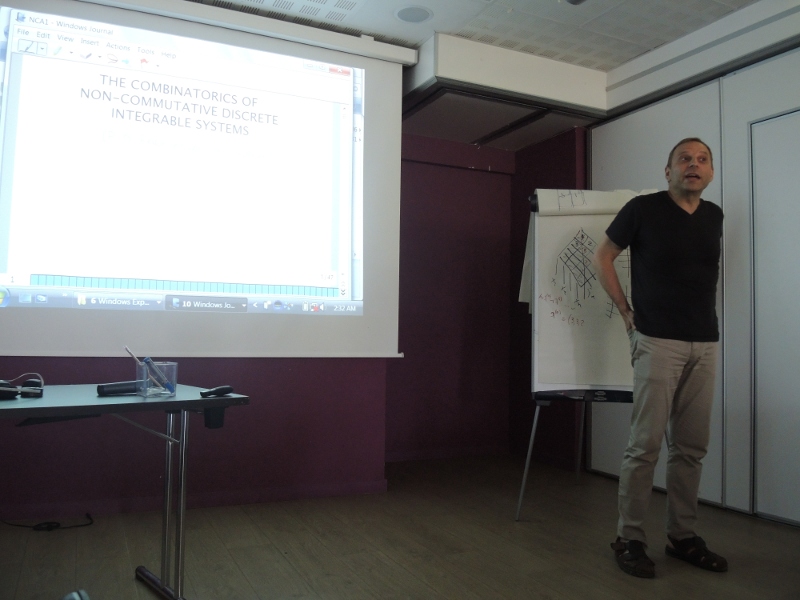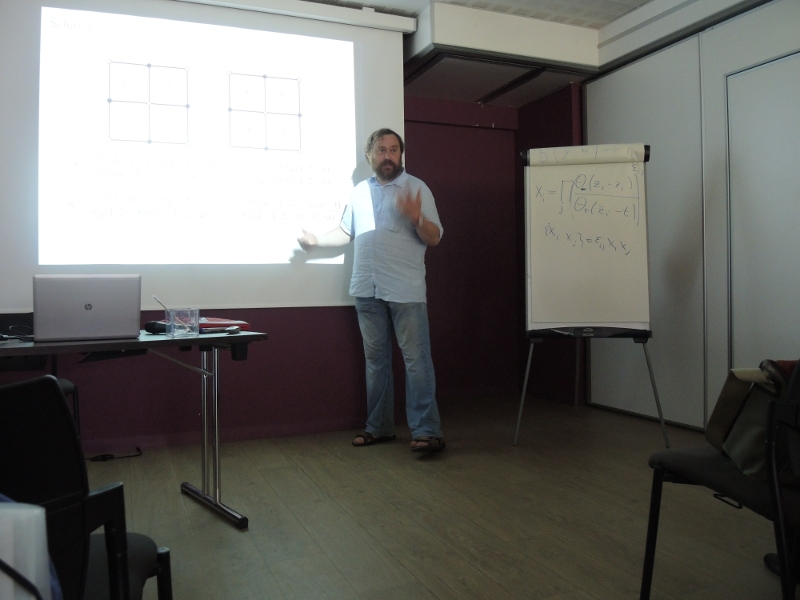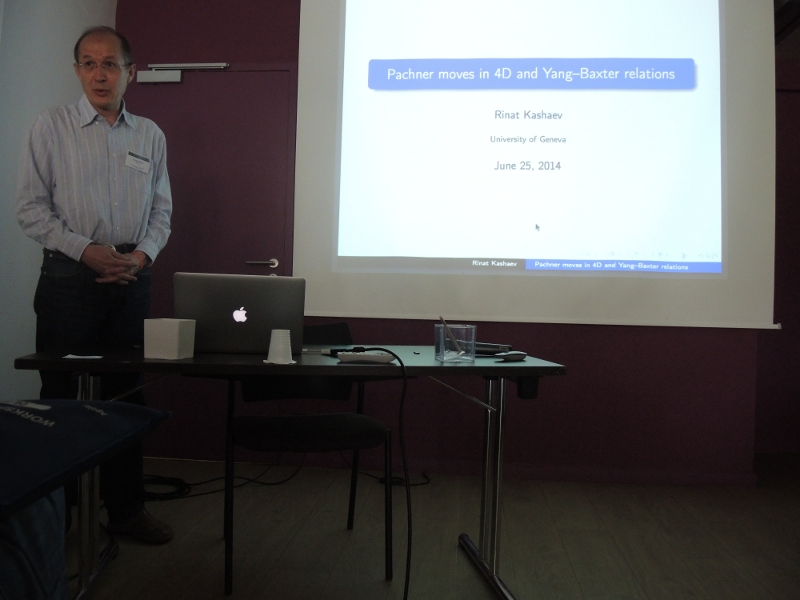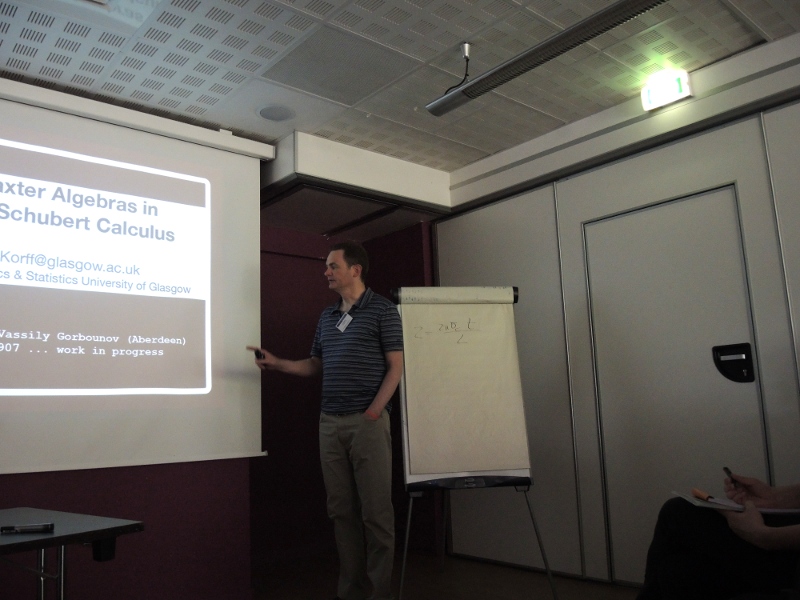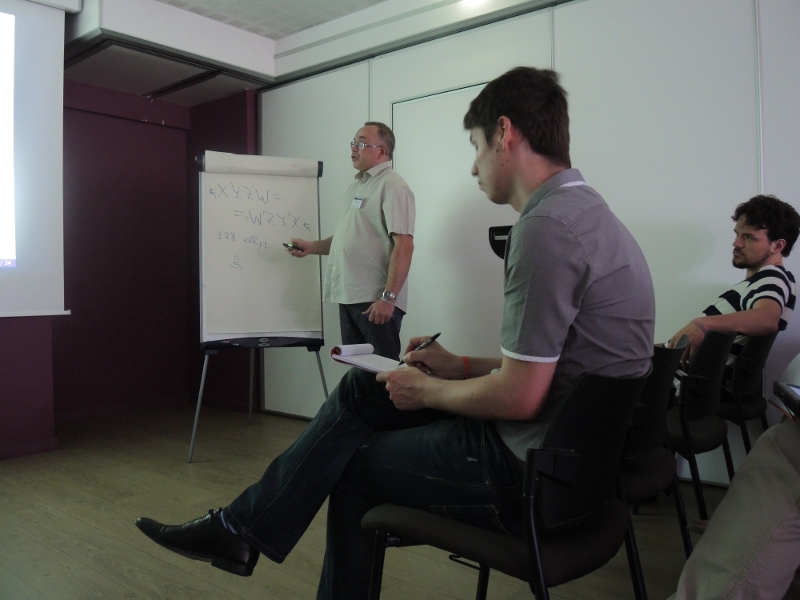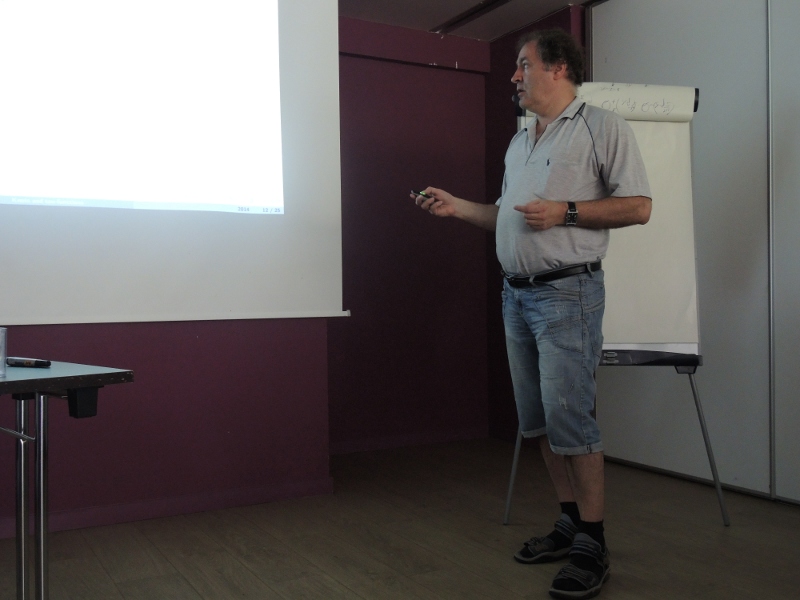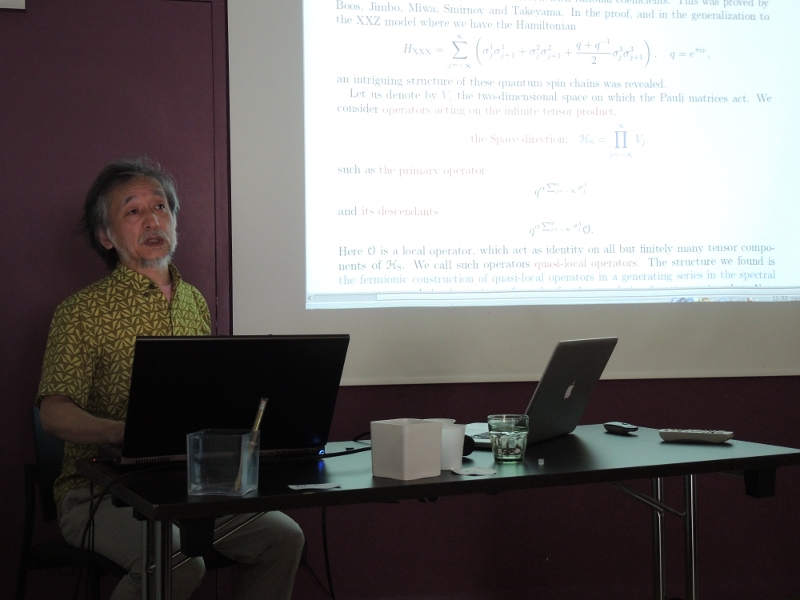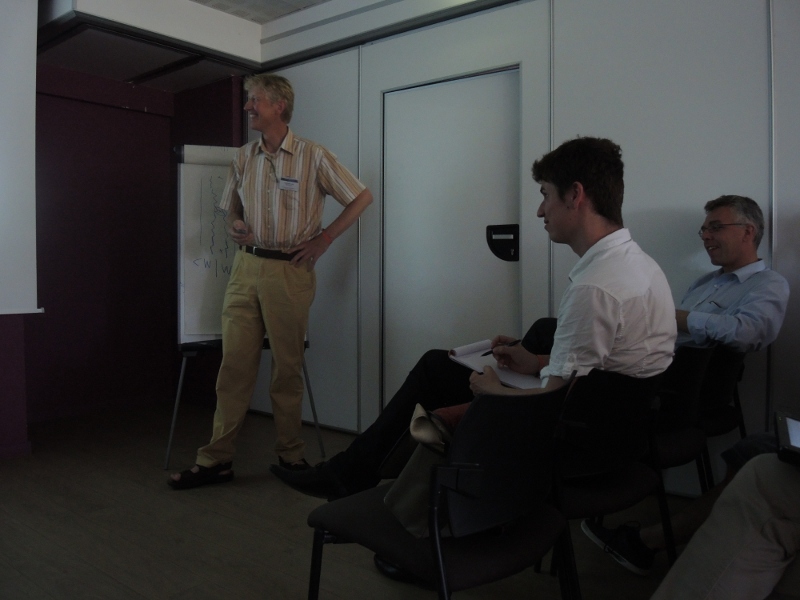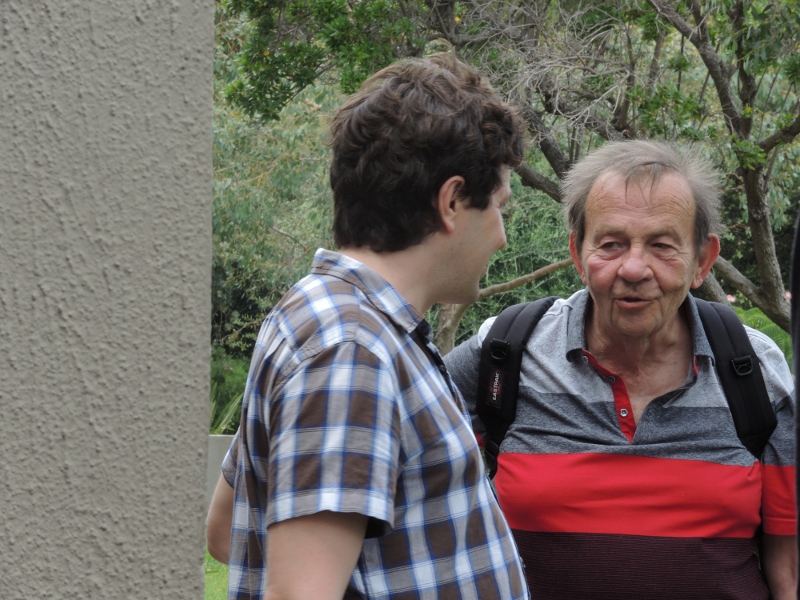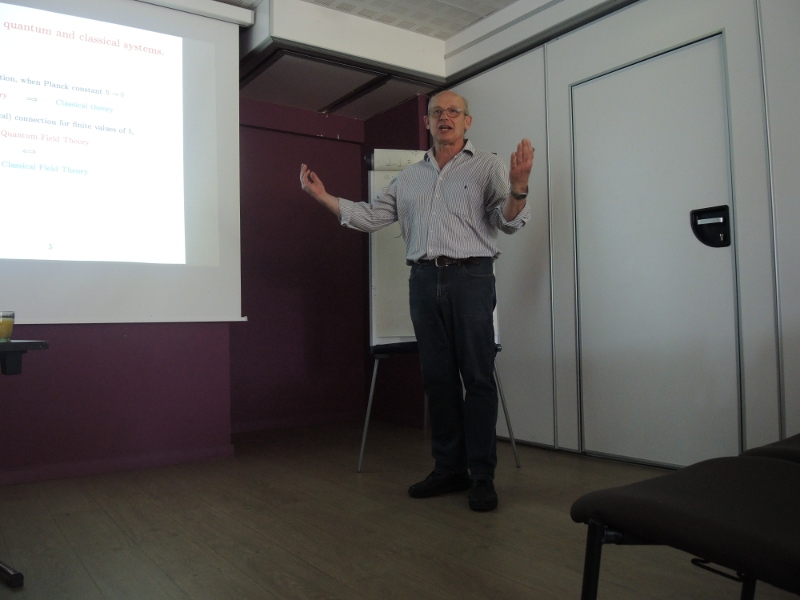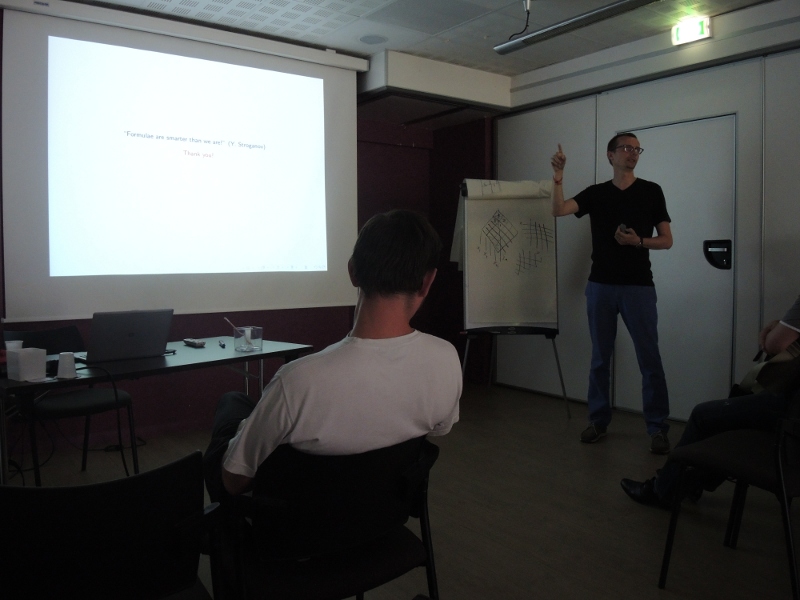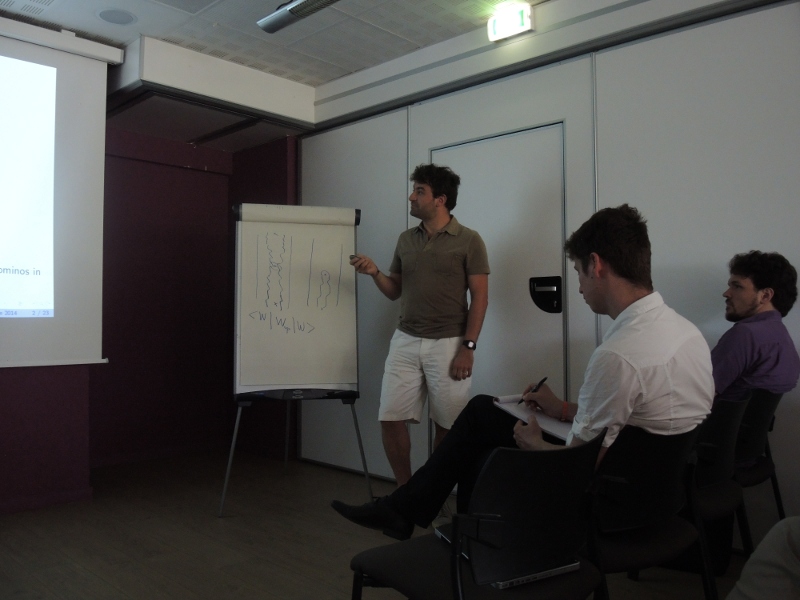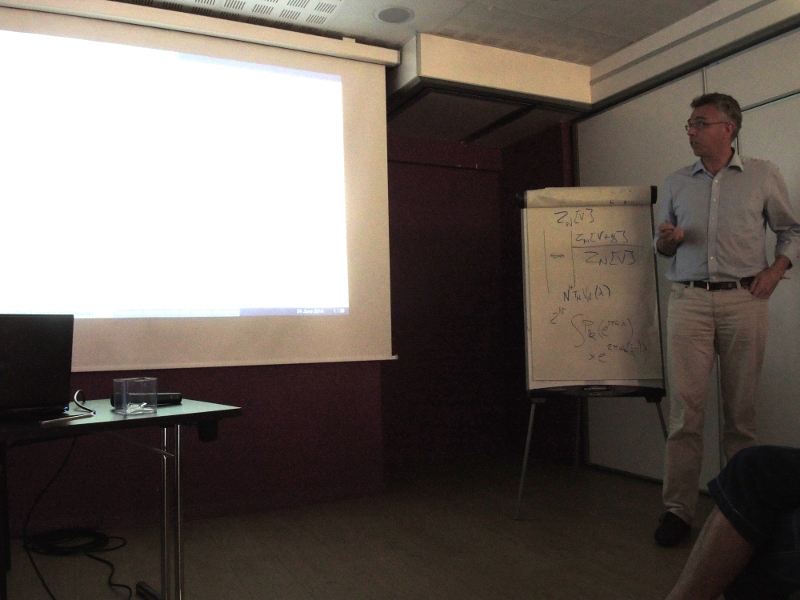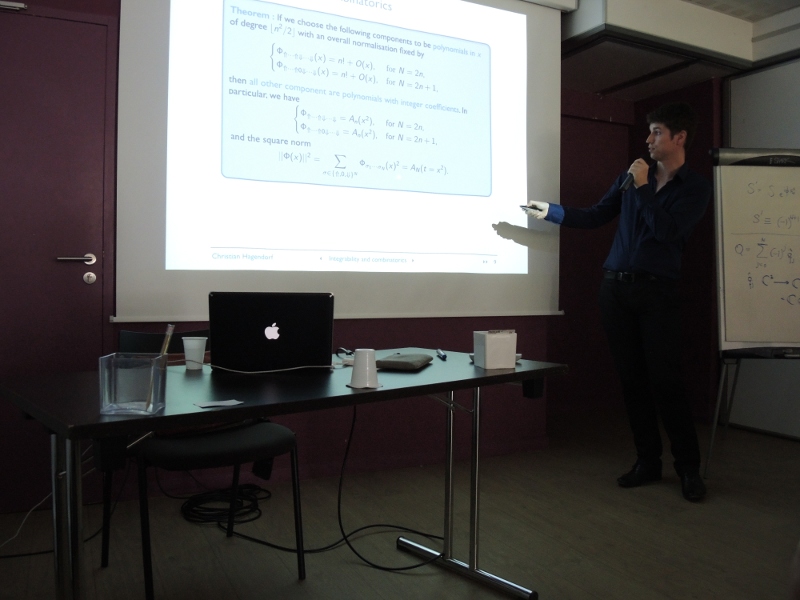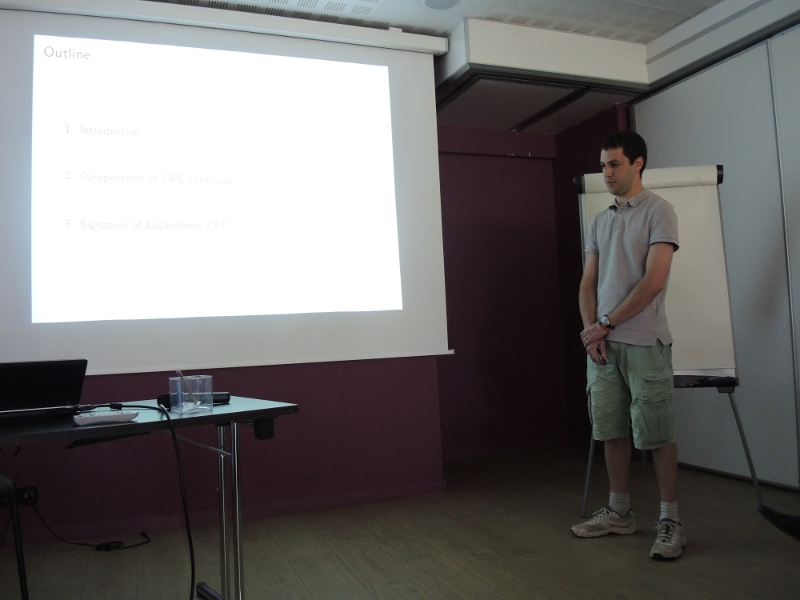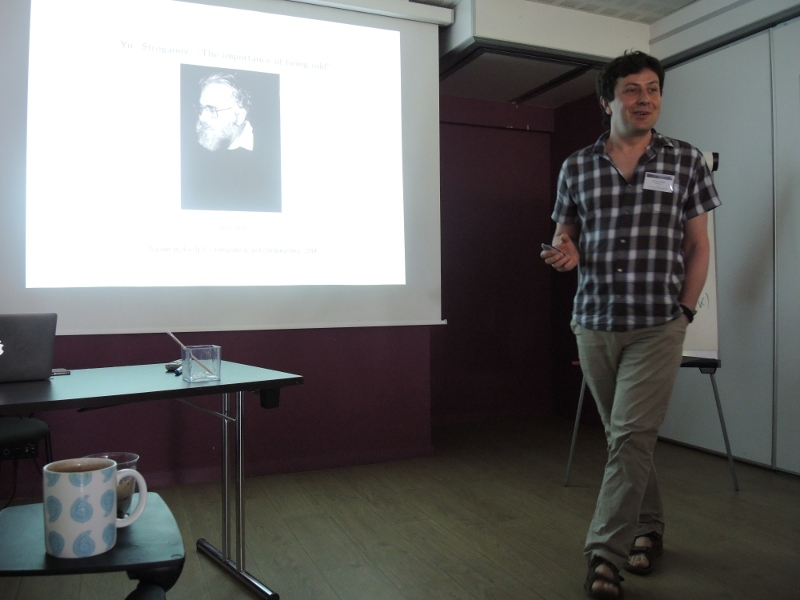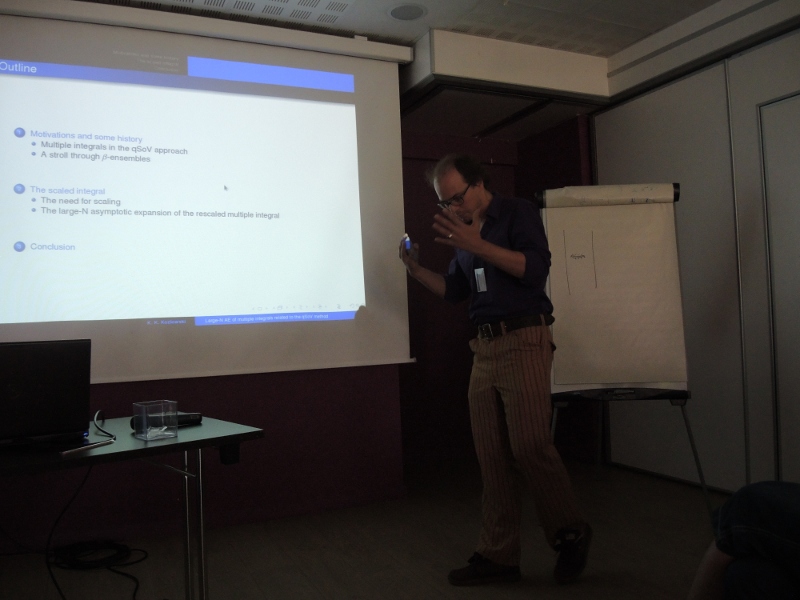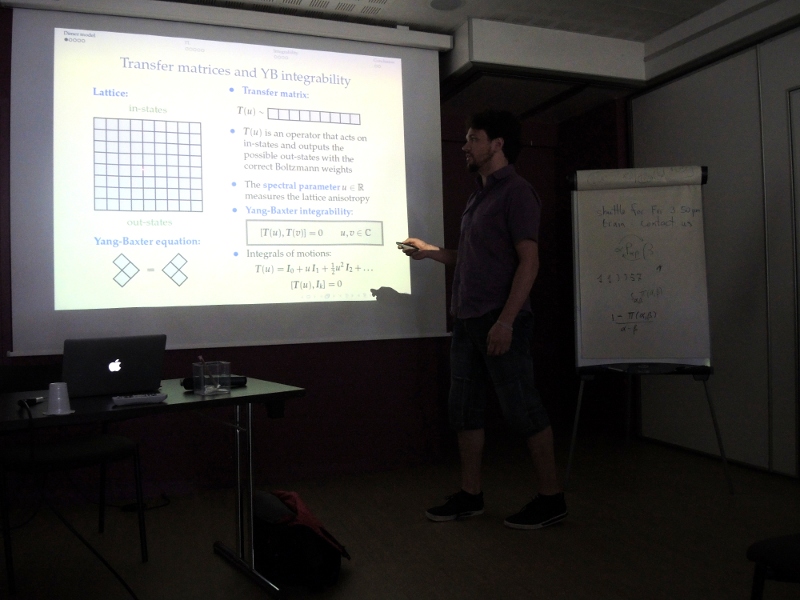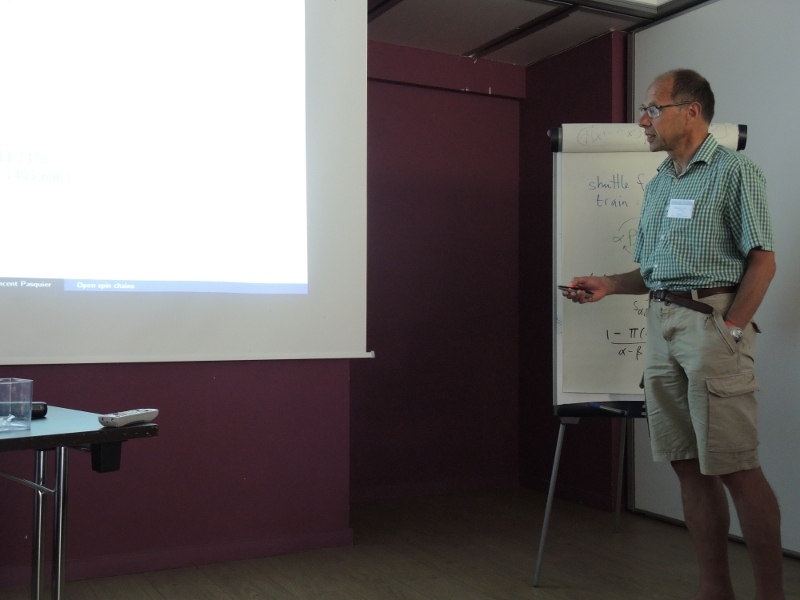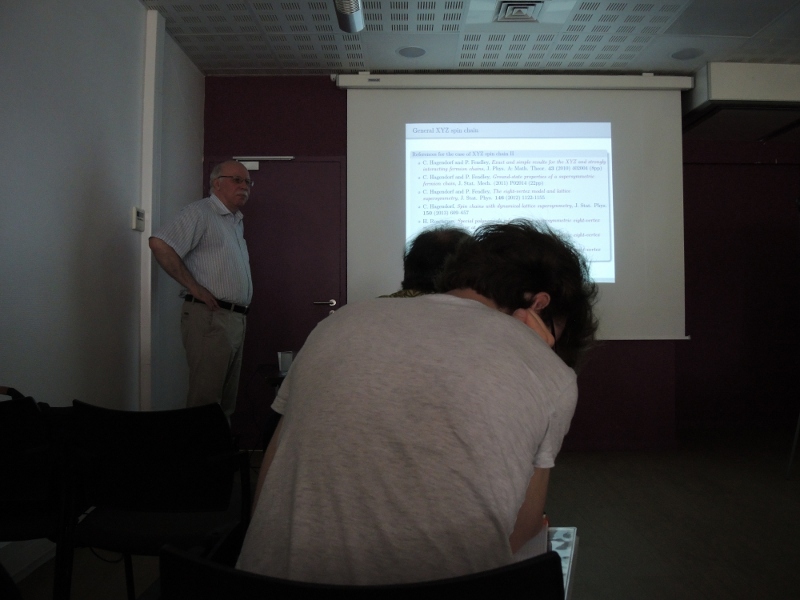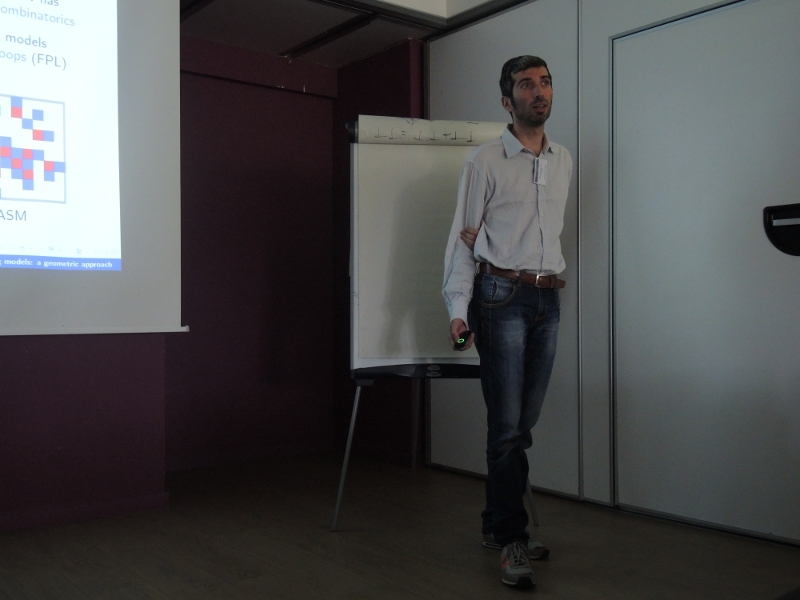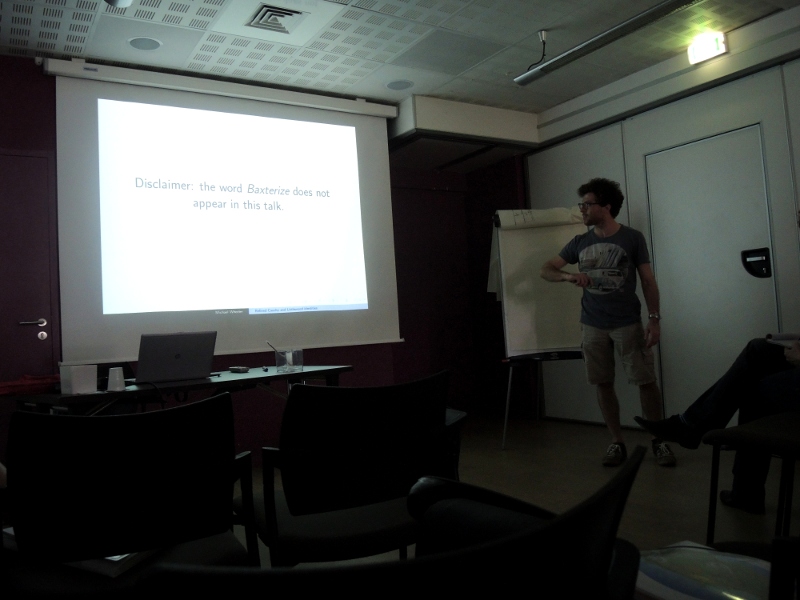The venue will provide a projector and paper boards. Please note that there will be no black or white board.
Invited Speakers:
Universal behavior of the Shannon and Rényi mutual information of quantum critical chains.
We report on this talk our results that indicate that the Shannon and the Renyi mutual information shared by subsystems of quantum critical chains at their ground states are also measures that could detect the universality class of critical behaviour of the quantum chain. Although this quantity depends on the basis the ground state is expressed our results indicate that there is special basis, that we call conformal basis, in which its leading behavior is basis independent. On these basis, as happens with the entanglement entropy, its finite-size behavior depends on the conformal anomaly $c$ of the underlying conformal field theory governing the long distance physics of the quantum chain.
Inhomogenous Multi-TASEP (M-TASEP) on a ring with spectral parameters
In this talk I will report on some ongoing work about a multispecies version of the TASEP, a model which describes the stochastic evolution of a system of particles of different species (labeled by an integer) on a periodic oriented one dimensional lattice, where two neighboring particles exchange their position with a rate which depends on their species. For some choice of these rates the Markov matrix turns out to be integrable and for the same choice the (unnormalized) stationary probability is conjectured to show remarkable positivity and combinatorial properties. By introducing spectral parameters in the problem we will uncover a novel algebraic structure underlying this problem which will allow us to provide exact formulas for the stationary probability of some configurations.
The combinatorics of non-commutative discrete integrable systems
Discrete integrable systems are systems of recursion relations describing evolution in a discrete time variable, with a suitable number of independent conservation laws.
We concentrate on the examples of $A_1$ Q- and T-systems, both part of cluster algebras, respectively of rank 2 and infinity. As such they enjoy the positive Laurent property: the solutions may be expressed in terms of the initial data as Laurent polynomials with non-negative integer coefficients.
We then formulate non-commutative analogues of these systems defined on a non-commutative algebra $A$, and prove the non-commutative positive Laurent property for their solutions. The proof relies on the existence of a $GL_2(A)$ flat connection on the solutions of these systems, a manifestation of their discrete non-commutative integrability. The solutions may be interpreted combinatorially as partition functions of paths on networks and/or dimers on graphs, with non-commutative weights.
Combinatorics and solution of cluster integrable systems
[slides]
Recently A.B.Goncharov and R.Kenyon suggested a class of integrable systems admitting cluster description and enumerated by Newton polygons - convex polygons on the plane with integer vertices. Though it turned out to be isomorphic to known integrable systems on Poisson-Lie groups \widehat{PGL}(N), the new approach being rather simple allows to improve our understanding of such systems. In particular it allows to study discrete flows commuting with continuous ones and given by cluster transformations.
Solutions for such system can be easily expressed in terms of Riemann theta functions using a combinatorial analogue of the Abel map.
Particular cases of these systems are relativistic Toda systems, pentagram map, Somos (at least 4 and 5) recurrences, Their quantisation gives lattice models and Hofstadter model.
In the talk we will explain the main construction using a few simple examples.
Pachner moves in 4D and Yang–Baxter relations
Pachner moves in triangulated 4-manifolds underly combinatorial TQFT constructions.
I will talk about a particular algebraic realization which can be interpreted as a specific family of quantum Yang-Baxter relations.
Equivariant quantum Schubert calculus and Yang-Baxter algebras
In this talk I will give an overview of a recent formulation of equivariant quantum Schubert calculus which employs quantum integrable lattice models. This formulation shows new connections between these rings and Lie theory and provides a simple combinatorial formalism to compute Gromov-Witten invariants by using a hopping algorithm for particles on a discrete circular lattice. Time permitting I will sketch the extension to K-theory. This is joint work with Vassily Gorbounov, Aberdeen.
A 3D approach to the 6-vertex model
In this talk I will explain how to employ a 3D approach to study the six-vertex model and its higher spin generalizations. Starting with the 3D R-matrix we consider a two-layer projection of the corresponding 3D lattice model. As a result we obtain a new expression for the higher spin $U_q(sl(2))$ $R$-matrix with a spectral parameter. Taking a special limit we obtain new formulas for the $Q$-operators acting in the tensor product of representation spaces with arbitrary complex spin.
Then we use a different strategy and construct $Q$-operators as integral operators with factorized kernels based on the original Baxter's ``pair-propagation through a vertex'' method. We compare these two constructions and find the explicit relationship between them. Finally, we discuss a reduction to the finite-dimensional case with (half-) integer spins.
Quantum R-matrices, classical integrability and knots
[slides]
The method to calculate the knot polynomials using quantum R-matrices implies natural links with classical integrable systems and their generalizations (via a character expansion). At the same time, it is related with relativistic quantum integrable systems in a non-trivial way. I will review these issues.
Creation Operator Approach to Integrable Spin Chains
I review the construction of good bases in the space of quasi-local operators acting on the integrable spin 1/2 chains, which gives rise to the determinant formula for the correlation functions, and discuss a generalization to the spin 1 case.
From the XXZ chain to the dilute loop model
When Razumov and Stroganov presented their observations on the ground state of the XXZ model with Delta=-1/2, I had the immediate association of its connection to the percolation model, and possibilities to obtain exact expressions for expectation values of observables in bond- and site-percolation models. In this talk I will discuss attempts to make these possibilities come true.
Cyclic representations of the periodic Temperley-Lieb algebra, complex Virasoro representations and stochastic processes
An $N(L,L/2)$ dimensional representation of the periodic Temperley-Lieb algebra $TLL(x)$ is presented. It is also a representation of the cyclic group $Z_N$. We choose $x = 1$ and define a Hamiltonian as a sum of the generators of the algebra acting in this representation. This Hamiltonian gives the time evolution operator of a stochastic process. In the finite-size scaling limit, the spectrum of the Hamiltonian contains representations of the Virasoro algebra with complex highest weights. The $N = 3$ case is discussed in detail. One discusses shortly the consequences of the existence of complex Virasoro representations on the physical properties of the system.
Contributed Talks:
Integrable structure of Quantum Field Theory: Classical flat connections versus quantum stationary states
We establish an intriguing correspondence between an infinite set of special solutions of the (classical) modified sinh-Gordon equation and a set of stationary states in the finite-volume Hilbert space of the integrable 2D QFT invented by V.A. Fateev. The modified sinh-Gordon equation arise in this case as a zero-curvature condition for a class of multivalued connections of the punctured Riemann sphere, similarly to Hitchin's self-duality equations. The proposed correspondence between the classical and quantum integrable systems provides a powerful tool for deriving functional and integral equations which determine the full spectrum of local integrals of motion for massive QFT in a finite volume. Potential applications of our results to the problem of non-perturbative quantization of classically integrable non-linear sigma models are briefly discussed. The talk is based on recent joint work with Sergei Lukyanov.
Fusion rules for Temperley-Lieb families
The Temperley-Lieb (TL) family of algebras is well known for its role in building integrable lattice models. Even though a proof is still missing, it is agreed that these models should go to conformal field theories in the thermodynamic limit and that the limiting vector space should carry a representation of the Virasoro algebra. The fusion rules are a notable feature of the Virasoro algebra. One would hope that there is an analogous construction for the TL family. Such a construction was proposed by Read and Saleur [Nucl. Phys. B 777, 316 (2007)] and partially computed by Gainutdinov and Vasseur [Nucl. Phys. B 868, 223-270 (2013)] using the bimodule structure over the Temperley-Lieb algebras and the quantum group Uq(sl2).
We use their definition for the dilute Temperley-Lieb (dTL) family, a generalisation of the original TL family. We develop a new way of computing fusion by using induction and show its power by obtaining fusion rules for both dTL and TL. We recover those computed by Gainutdivov and Vasseur and new ones that were beyond their scope. In particular, we identify a set of irreducible TL- or dTL-representations whose behavior under fusion is that of some irreducibles of the CFT minimal models.
Six-vertex model partition functions and symmetric polynomials of type BC
[slides]
[Joint with Michael Wheeler] Cauchy and Littlewood identities are cornerstone results in the theory of symmetric functions. They equate infinite sums of symmetric polynomials in given alphabets with simple product expressions over the elements in the alphabets. Among their many applications and interpretations, they can be considered as generating functions of plane partitions. We will discuss some recent refinements of these identities, which evaluate to partition functions of the six-vertex model on specific domains. These partition functions are multi-parameter generating functions of symmetry classes of alternating-sign matrices.
Steep tilings and sequences of interlaced partitions
[slides]
We present a general bijection between a family of domino tilings (the so-called "steep tilings") and sequences of partitions where, at each step, one adds or removes an horizontal or vertical strip. As particular cases, we recover domino tilings of the Aztec diamond and pyramid partitions. We will discuss some applications concerning enumeration, asymptotic shapes and random generation. Based on joint work with Sylvie Corteel, Guillaume Chapuy and later on with Cédric Boutillier, Sanjay Ramassamy and Mirjana Vuletić.
Polynomial solutions to the $q$KZ equation, non-symmetric Macdonald polynomials and Kazhdan-Lusztig elements
[slides]
I will discuss polynomial solutions of the qKZ equation related to the Razumov-Stroganov-Cantini-Sportiello theorem. In different bases these are given by specialisations of known polynomials such as non-symmetric Macdonald polynomials or Kazhdan-Lusztig elements. I will discuss how these can be described algebraically and highlight the combinatorics of basis transformations.
The nineteen-vertex model and alternating sign matrices
It is shown that the transfer matrix of the inhomogeneous nineteen-vertex model possesses a simple eigenvalue for any value of the crossing parameter, and certain diagonal twisted boundary conditions. This is achieved through the identification of a simple and completely explicit solution of its Bethe equations.
The corresponding eigenvector is computed by means of the algebraic Bethe ansatz, and its square norm is shown to be related to the Izergin-Korepin determinant. In the homogeneous limit, the vector coincides with the supersymmetry singlet of the twisted spin$-1$ XXZ chain. It is proven that in a natural polynomial normalisation scheme its square norm coincides with a generating function for weighted enumeration of alternating sign matrices.
Correlation functions in loop models
[slides]
Loop models are stat. mech. models of fluctuating polygons on a 2d lattice, representing phase transitions in the geometry of polymers or Ising domain walls, for example. They have been much studied by the methods of Conformal Field Theory (CFT), but many aspects remain unsolved. In this talk, I will address the problem of computing four-point correlation functions, and extracting from them the structure constants of the operator algebra (OPE coefficients). The scaling theory for loop models displays some features which makes it very distinct from the unitary minimal CFTs: it has an infinite, countable set of primary fields, some of which have spin, and its Hamiltonian is not diagonalisable.
Combinatorics of the form factors of the XXZ chain
[slides]
We study the asymptotic behaviour of the correlation functions of quantum integrable model. We develop an approach based on the summation of the appropriate form factors. We show that this approach gives rise to a number of combinatoric identities. These identities lead to the leading terms of the asymptotics for the two-point and multi-point correlation functions.
Large-N asymptotic expansion of multiple integrals related to the quantum separation of variables method
The scalar products and certain correlation functions of models solvable by the quantum separation of variables can be expressed in terms of $N$-fold multiple integrals which can be thought of as the partition function of a one dimensional gas of particles trapped in an external potential $V$ and interacting through repulsive two-body interactions of the type $\log \big[ \sinh[\pi \omega_1(\lambda-\mu)]\cdot \sinh[\pi \omega_2 (\lambda-\mu)] \big]$. The analysis of the large-$N$ asymptotic behaviour of these integrals is of interest to the description of the continuum limit of the integrable model. Although such partition functions present certain structural resemblances with those arising in the context of the so-called $\beta$-ensembles, their large-$N$ asymptotic analysis demands the introduction of several new ingredients. Such a complication in the analysis is due to the lack of dilation invariance of the exponential of the two-body interaction. In this talk, I shall discuss the main features of the method of asymptotic analysis which we have developed. The method utilises large-deviation techniques on the one hand and the Riemann--Hilbert problem approach to truncated Wiener-Hopf singular-integral equations on the other hand.
Integrability in the dimer model
[slides]
The dimer model on the square lattice is a statistical model that can be investigated using a transfer matrix $T(\alpha)$, where $\alpha$ is the weight assigned to horizontal dimers. It is exactly solvable in the sense that the transfer matrix can be rewritten in terms of free fermions, and this allows for an exact computation of the eigenvalues of $T(\alpha)$ and of the partition functions for all lattice sizes. However, because $[T(\alpha), T(\beta)] \neq 0$ in general, the dimer model does not satisfy the usual criteria for Yang-Baxter integrability. In this talk, I discuss an intrinsic relation between the dimer model and critical dense polymers, a Temperley-Lieb loop model with loop fugacity $\beta = 0$, and use this to reconciliate free-fermion and Yang-Baxter integrability for the dimer model.
On Bethe Ansatz for the open XXX chain
[slides]
I will present a possible solution for the open XXX chain in presence of non parallel boundary fields. It uses a K matrix deforming the matrix Ansatz of the Tasep. I will explain how it can be used to obtain functional equations using old ideas due to Bazhanov-Stroganov. I will also use ideas of Pronko-Stroganov to obtain a non homogeneous Bethe equations for the closed chain and relate to some recent proposals concerning the open chain.
What is now the status of $\Delta = - 1 / 2$?
[slides]
It is an introductory review on the conjectures made by Razumov and Stroganov about properties of the components of the ground state of the XXZ spin chain in the so called combinatorial point. It is discussed what is proved already, and what is new in this field.
An approach to the limit shape of large Alternating Sign Matrices
[slides]
Work in collaboration with Filippo Colomo.
Among the interests of Yuri Stroganov there are 6-vertex DWBC integrable models at their "combinatorial points", and how they are related to combinatorial objects such as Alternating Sign Matrices.
These objects show the appearance of limit shapes, which are completely understood at the fermionic points, and understood but not proven in a fully rigorous way on the integrable manifold.
We describe here how certain boundary correlation function, namely the single- and doubly-refined enumerations, exactly known from integrability, are an effective "probe" to determine the limit shape inside the domain, through a procedure that we call "the tangent method".
Thus, our procedure relies, in particular, on works by Yuri such as "Izergin-Korepin Determinant at a Third Root of Unity; Theor. and Math. Physics 146 (2006) 53-62".
Refined Cauchy/Littlewood identities and partition functions of the six-vertex model
[slides]
[Joint with Dan Betea] Cauchy and Littlewood identities are cornerstone results in the theory of symmetric functions. They equate infinite sums of symmetric polynomials in given alphabets with simple product expressions over the elements in the alphabets. Among their many applications and interpretations, they can be considered as generating functions of plane partitions. We will discuss some recent refinements of these identities, which evaluate to partition functions of the six-vertex model on specific domains. These partition functions are multi-parameter generating functions of symmetry classes of alternating-sign matrices.




